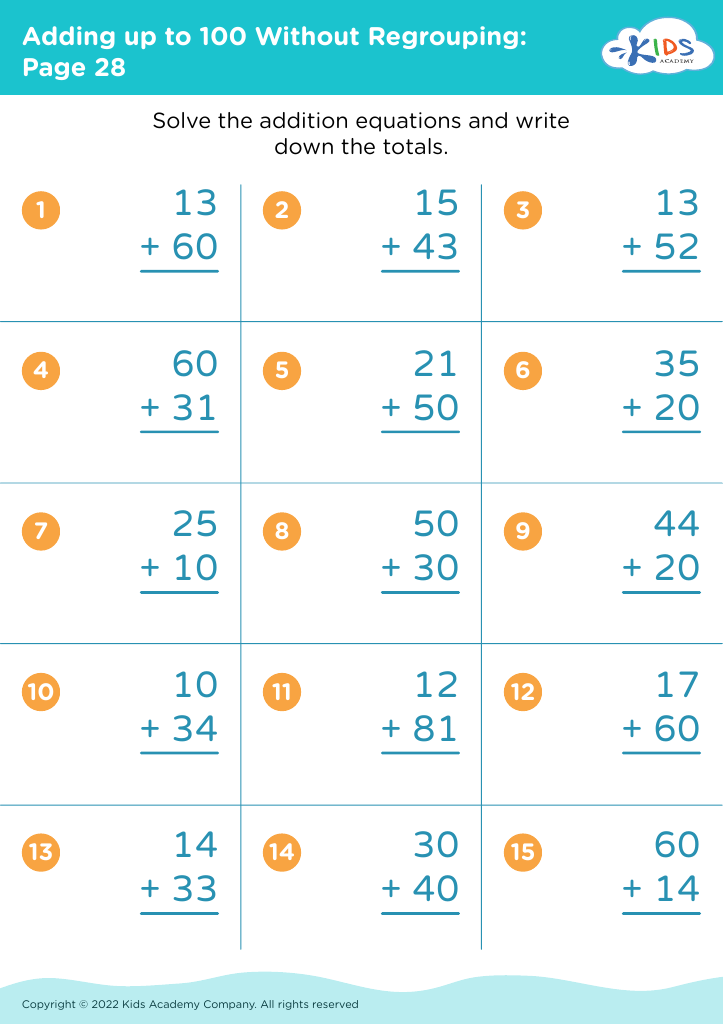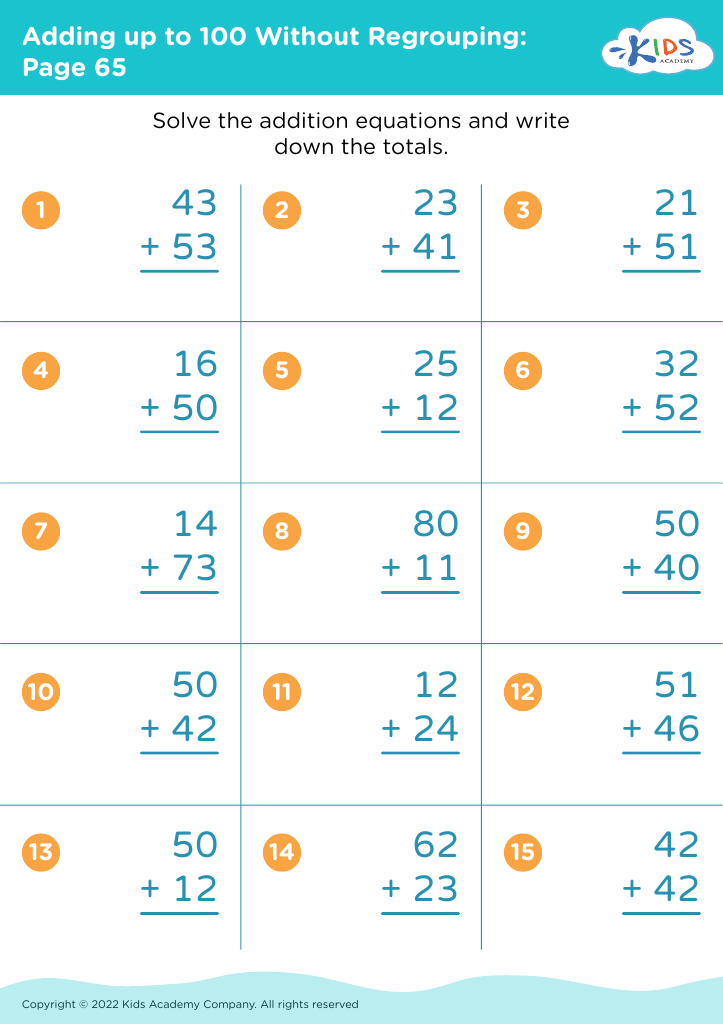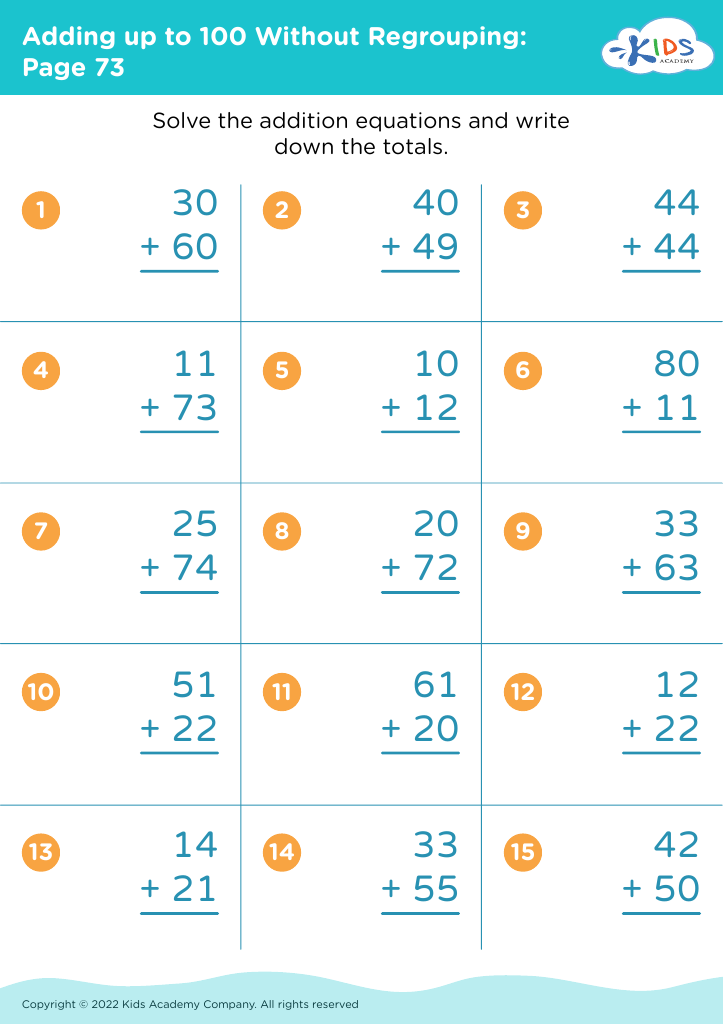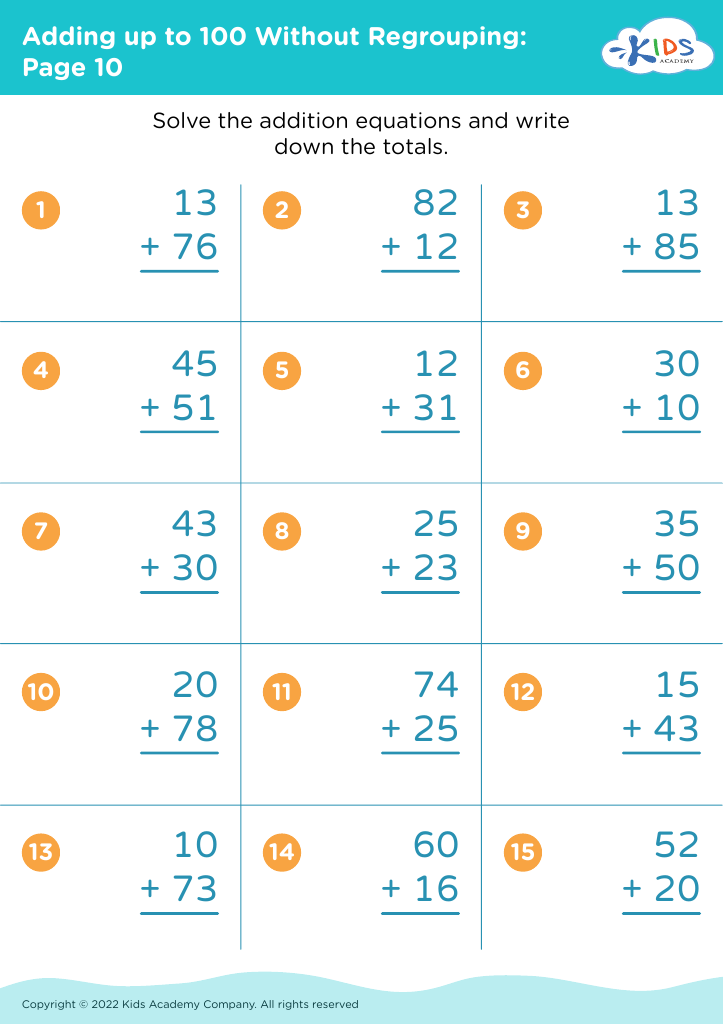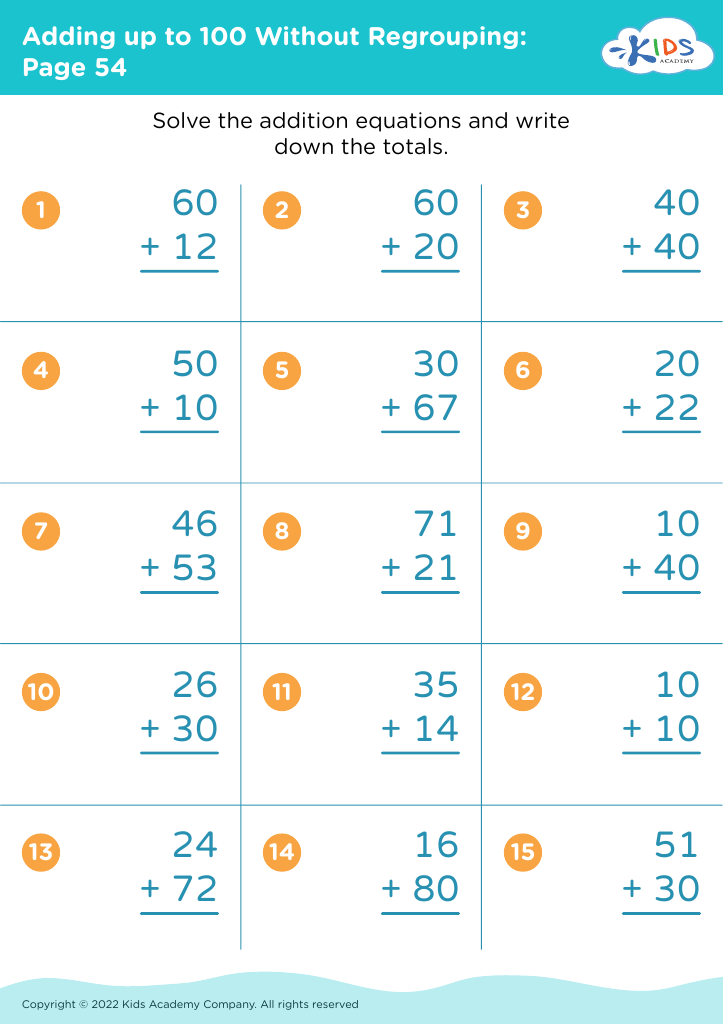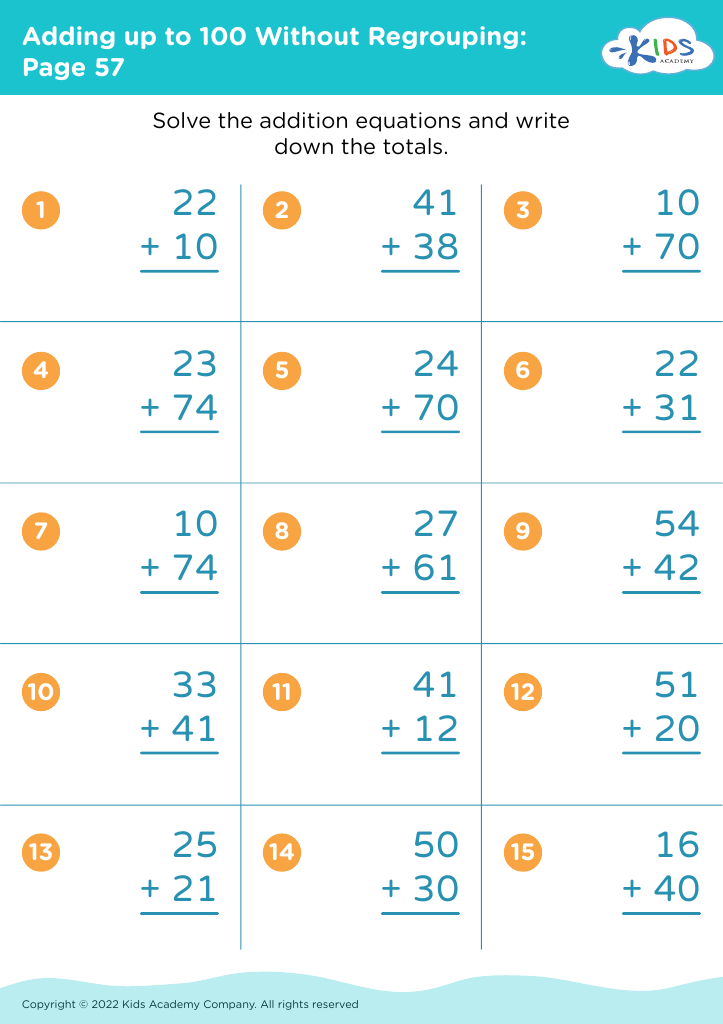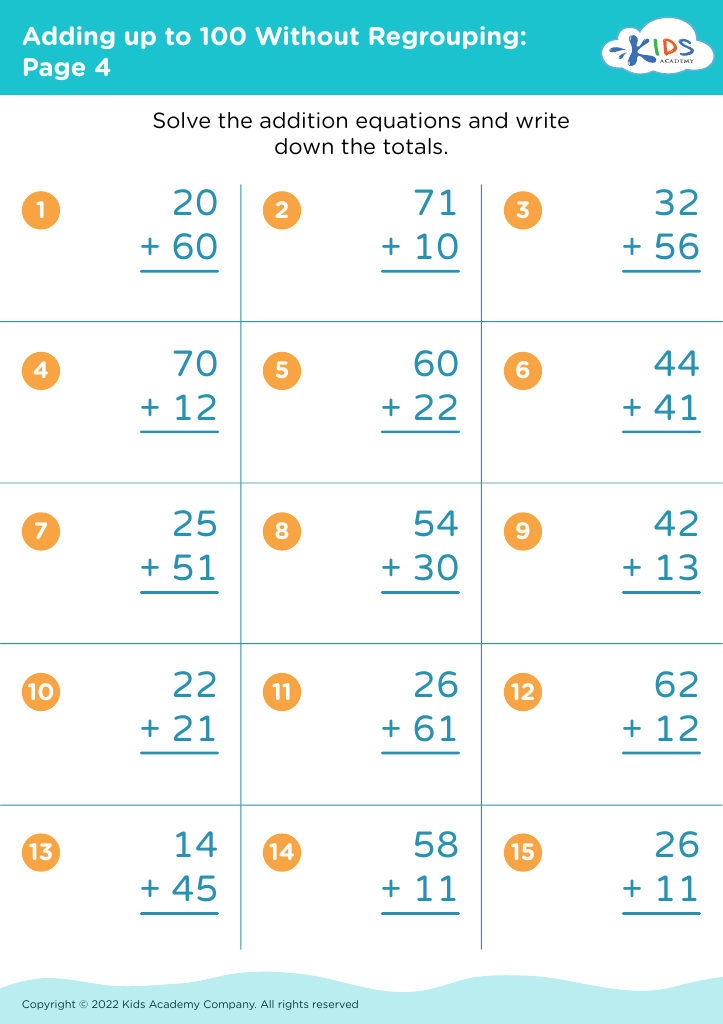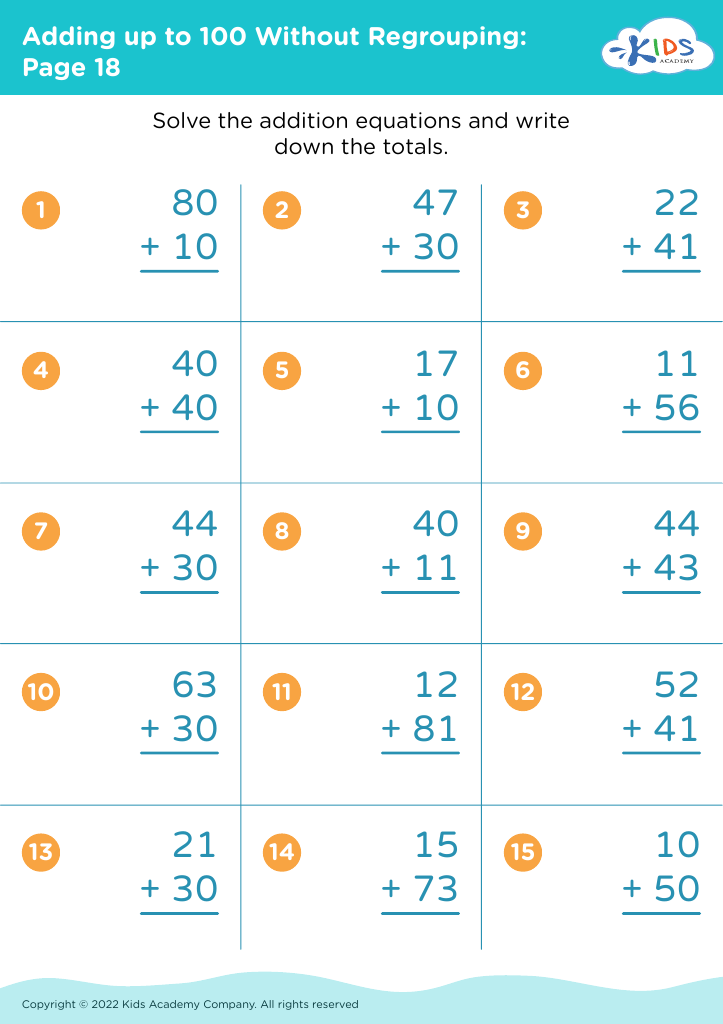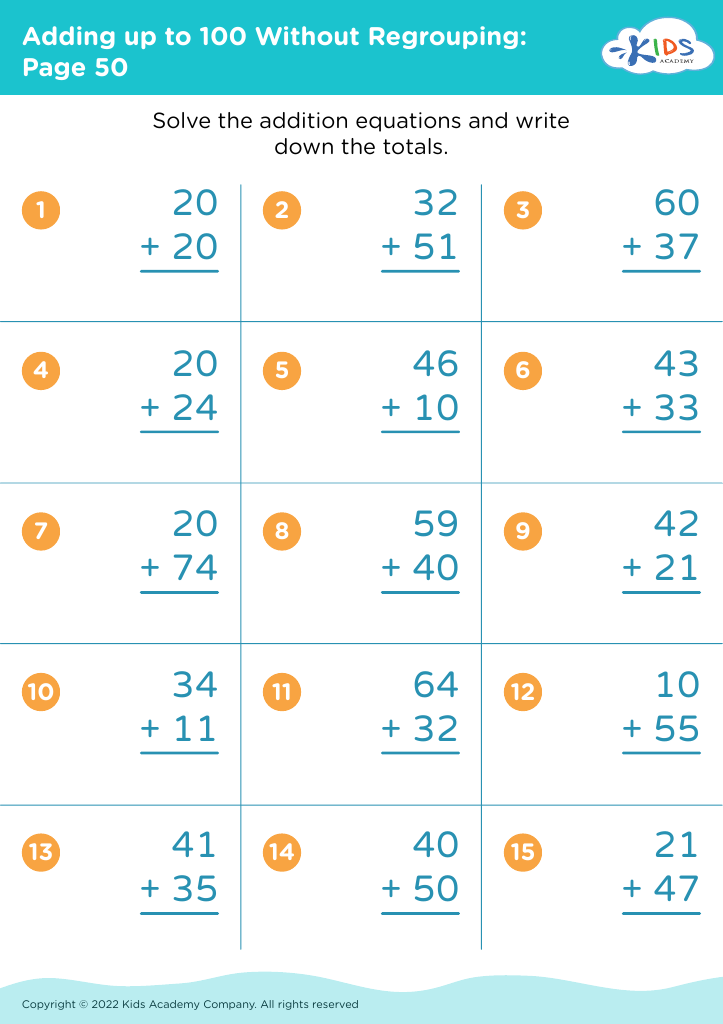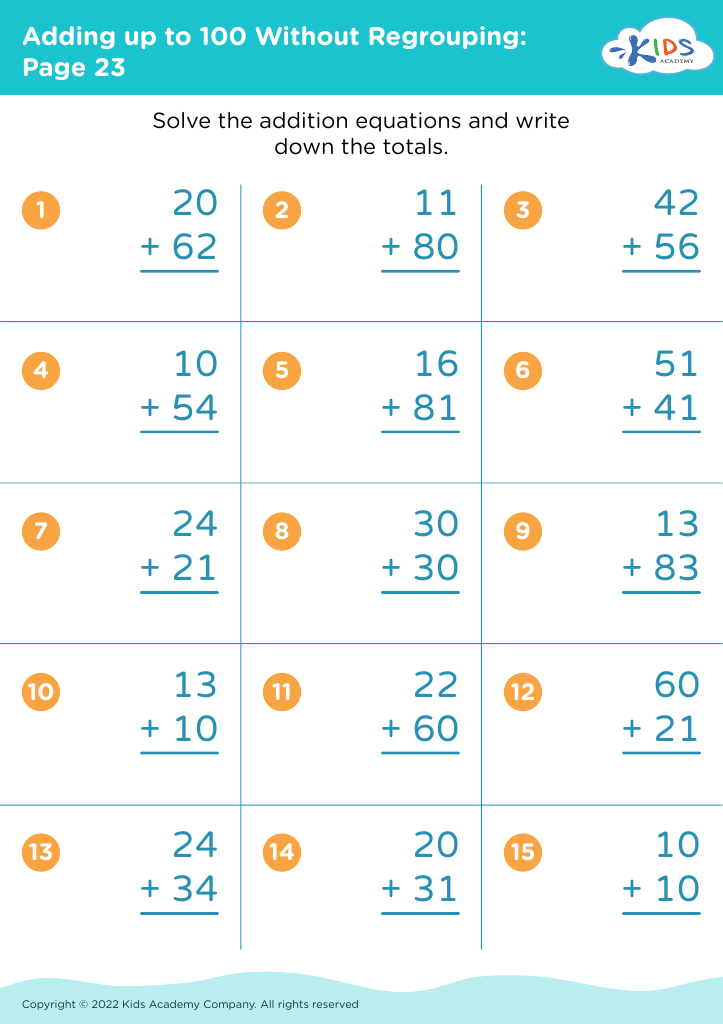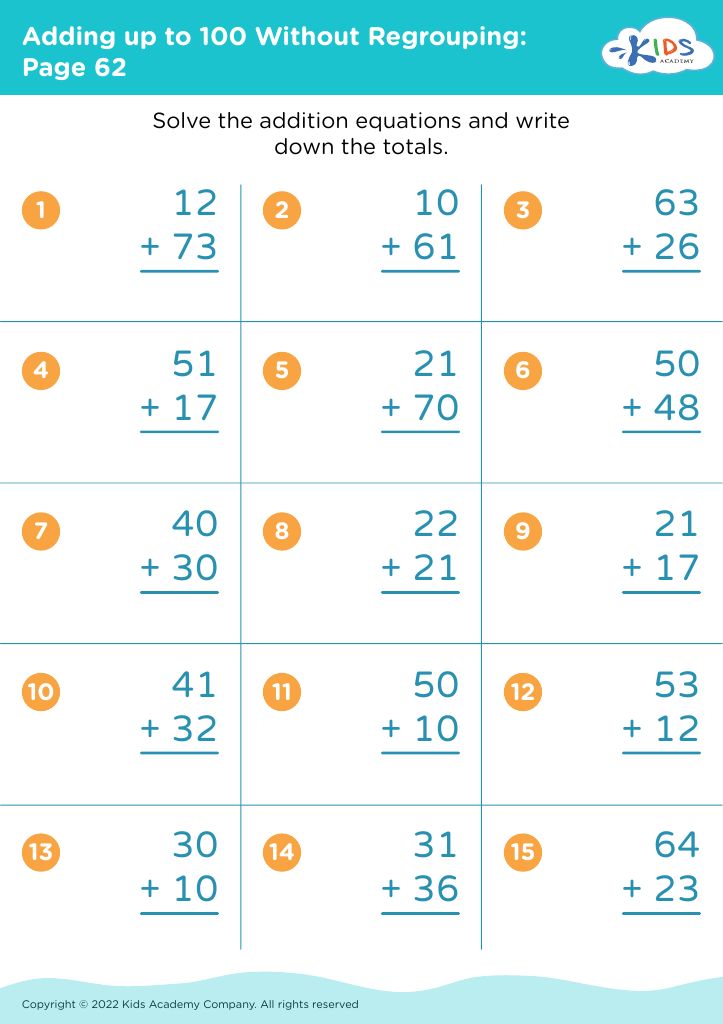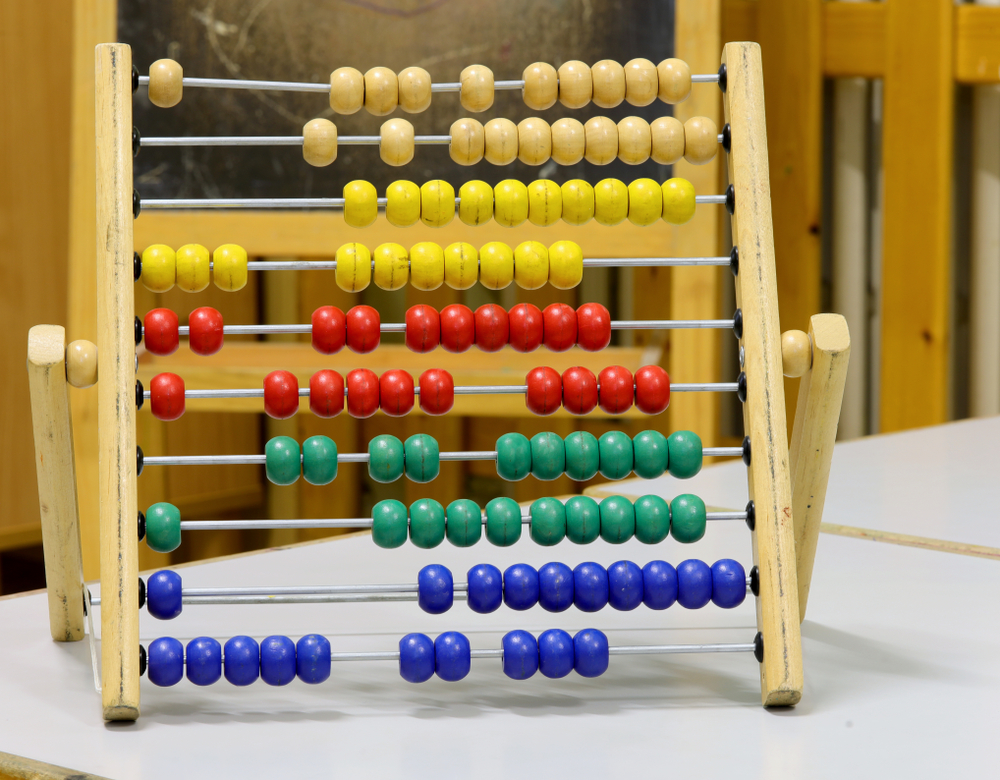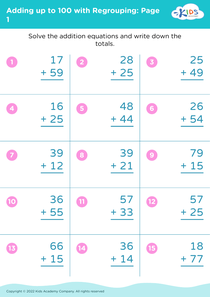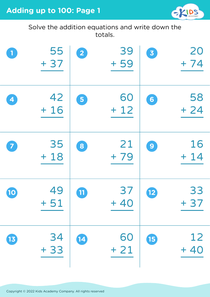Comparing Fractions Adding up to 100 Without Regrouping Worksheets for Ages 6-7
11 filtered results
-
From - To
Teach young learners vital math skills with our "Comparing Fractions Adding up to 100 Without Regrouping" worksheets, designed for ages 6-7.
These printables introduce kids to the basics of comparing fractions in a fun and engaging way. Through visually appealing activities, children will learn to compare fractions while enhancing their addition skills, all within a no-regrouping framework.
Perfectly tailored for early grades, these worksheets bolster student confidence and proficiency in essential math principles. Our expertly crafted resource ensures a solid foundation in comparing fractions and early arithmetic, fostering a love of learning and mathematical exploration.
Parents and teachers should care about teaching six- to seven-year-olds how to compare fractions and add them up to 100 without regrouping because it lays a solid foundation for their mathematical understanding and critical thinking skills. At this early stage, children are developing fundamental cognitive abilities, and mastering these concepts will hugely benefit their math fluency and overall confidence in the subject.
Comparing fractions helps young children grasp the idea that numbers can represent parts of a whole, introducing them to the concept of proportion and relative value. Understanding this relationship is essential for many higher-level math topics, including algebra, geometry, and calculus. Adding fractions up to 100 helps children practice their addition skills in a straightforward and manageable way. It also reinforces place value, number sense, and the concept of carrying over, which are critical for future arithmetic operations.
Moreover, teaching these concepts without regrouping ensures that children focus on basic addition strategies without the added complexity of carrying over, making it easier for them to understand and apply these skills confidently. This can foster a love for mathematics by ensuring that early learning experiences are positive and empowering, which can encourage a lifelong interest in the subject.
